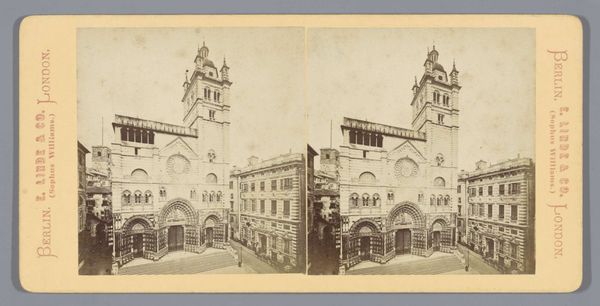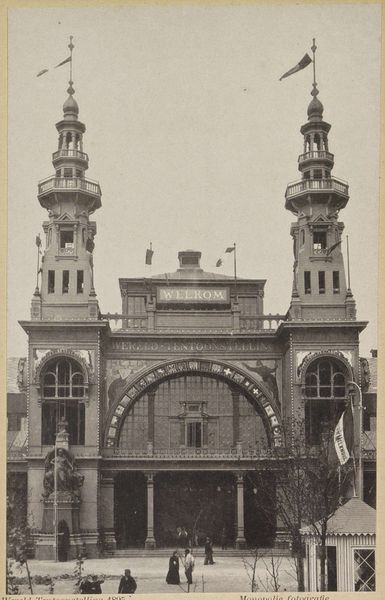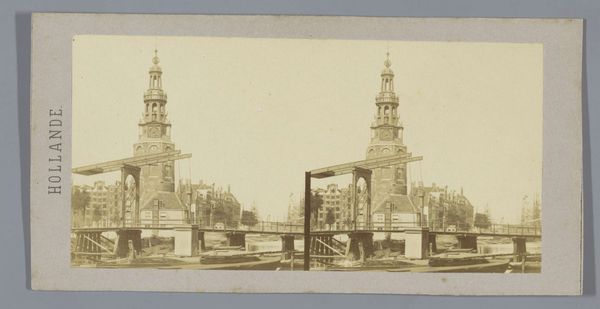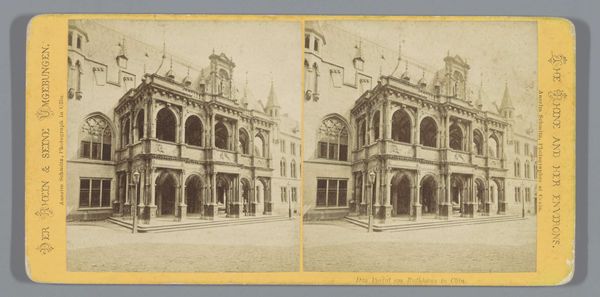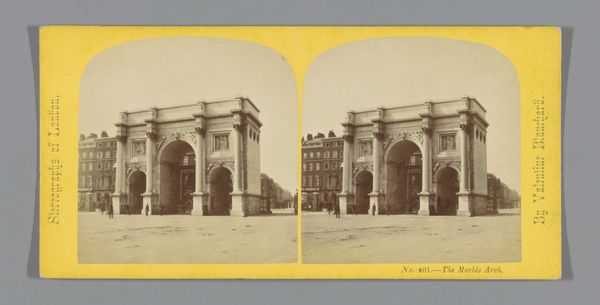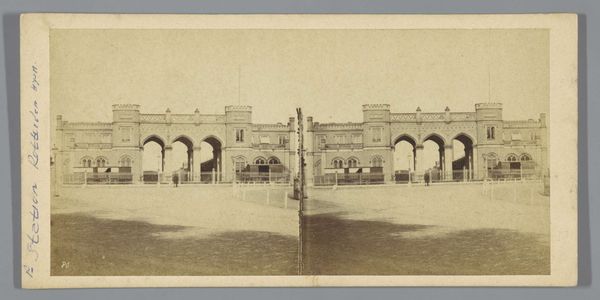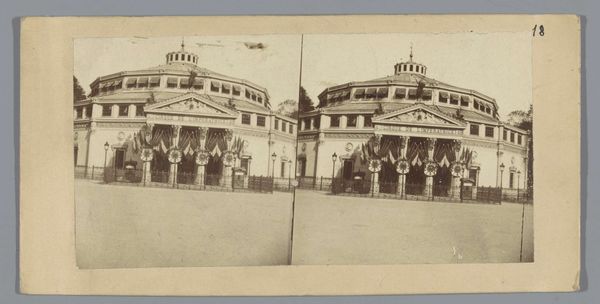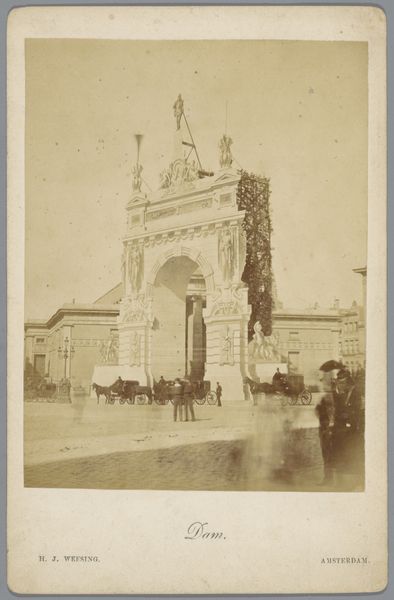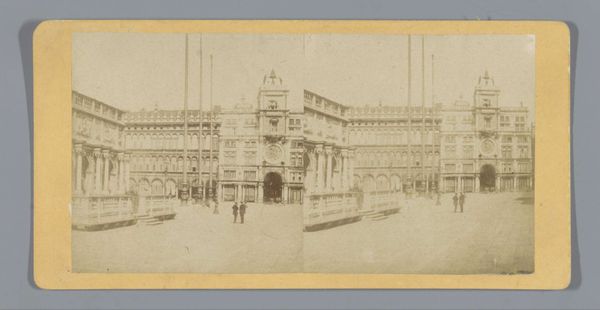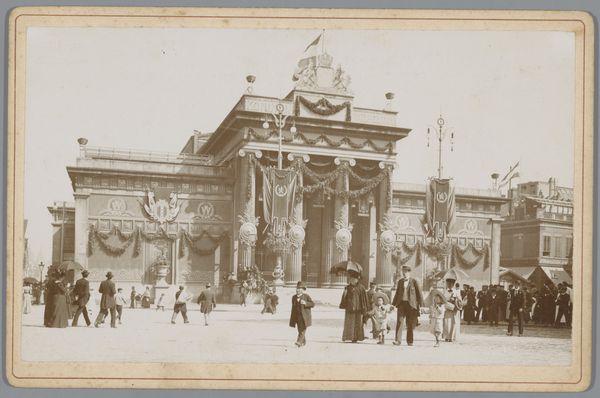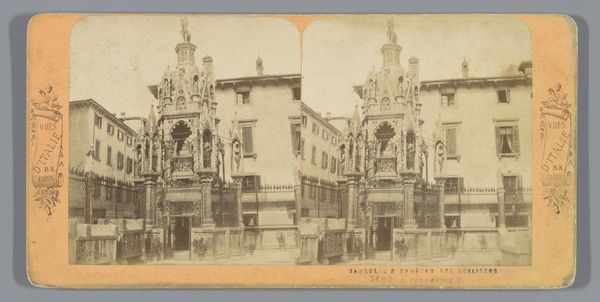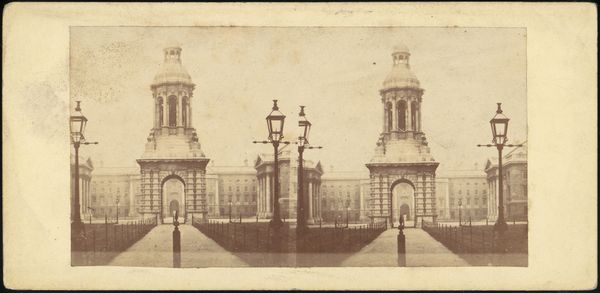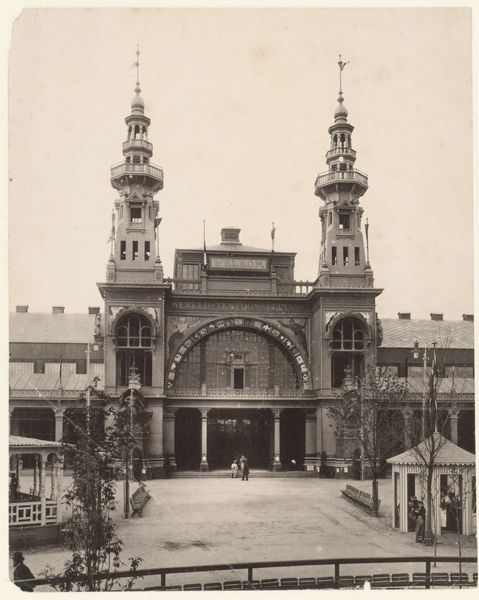
Dimensions: height 84 mm, width 175 mm
Copyright: Rijks Museum: Open Domain
Editor: Here we have "Gezicht op de Porta Magna van de Arsenale in Venetië," a photograph by Sommer & Behles, likely from the late 1860s to 1880s, made using the albumen print process. The architecture feels quite imposing and grand. How should we approach interpreting this image? Curator: Let's consider the production of this albumen print. This process involved coating paper with a layer of egg white and then sensitizing it with silver nitrate. It speaks volumes about the booming trade and consumption surrounding early photographic techniques in 19th-century Europe. What labor was required to create such an image, from the egg farms to the darkroom? Editor: That’s interesting. I hadn’t thought about it in terms of labor. So, it’s not just a cityscape but a product of specific economic and industrial systems. Curator: Precisely. And beyond that, who was consuming these images? Albumen prints like this were popular as souvenirs for tourists. The act of taking, printing, buying, and selling transforms Venice into a commodity to be consumed. Look at the scale of the Arsenale itself, originally a site of immense state-controlled production. This photo encapsulates Venice's transition from a powerhouse of naval manufacturing to a spectacle for tourists. How does the materiality of the image, that glossy albumen finish, contribute to that feeling? Editor: I see your point. The smooth surface almost glamorizes the building, making it seem like a perfect postcard. But, does that oversimplify the historical context? Curator: Not at all. The print is material evidence of evolving practices in technology, tourism, and economies, and understanding those things shapes how we value the image and its subject. How could this be a commentary on authenticity versus constructed experience, with the photographer at the center of this complex trade? Editor: Okay, so instead of just seeing a pretty picture of Venice, we are acknowledging how the photograph itself is embedded in layers of production, consumption, and even shifts in the city's identity. Curator: Exactly. Every stage, from the hen to the tourist's album, shapes how we read the image. Editor: I will certainly look at photographs differently now!
Comments
No comments
Be the first to comment and join the conversation on the ultimate creative platform.
